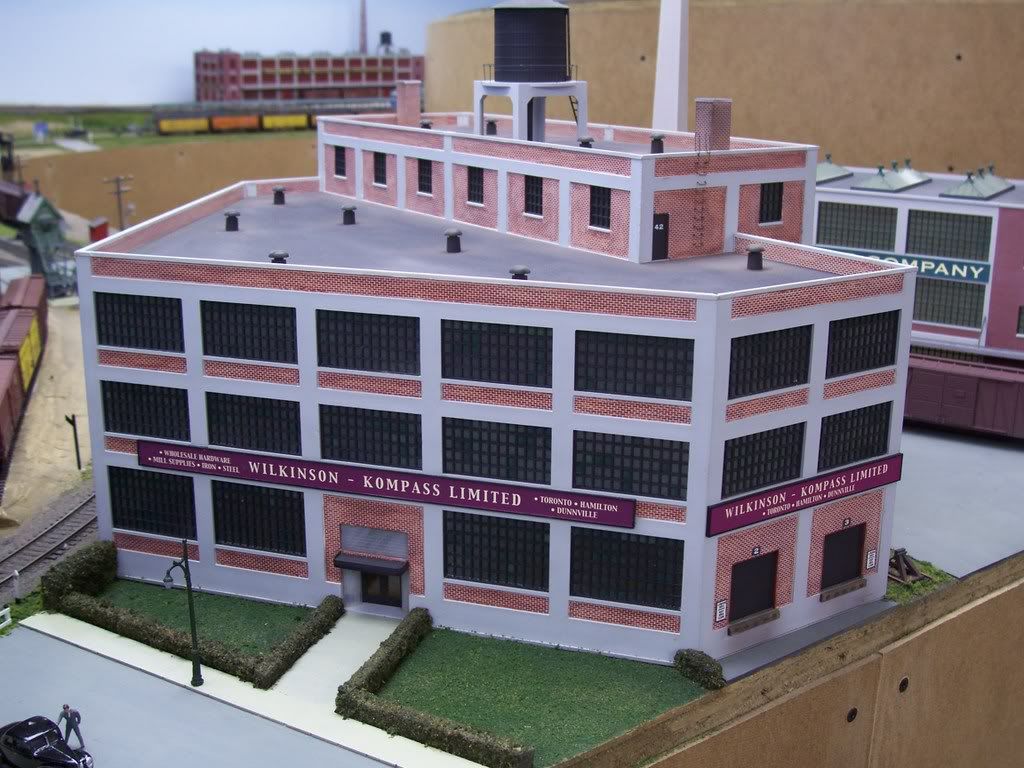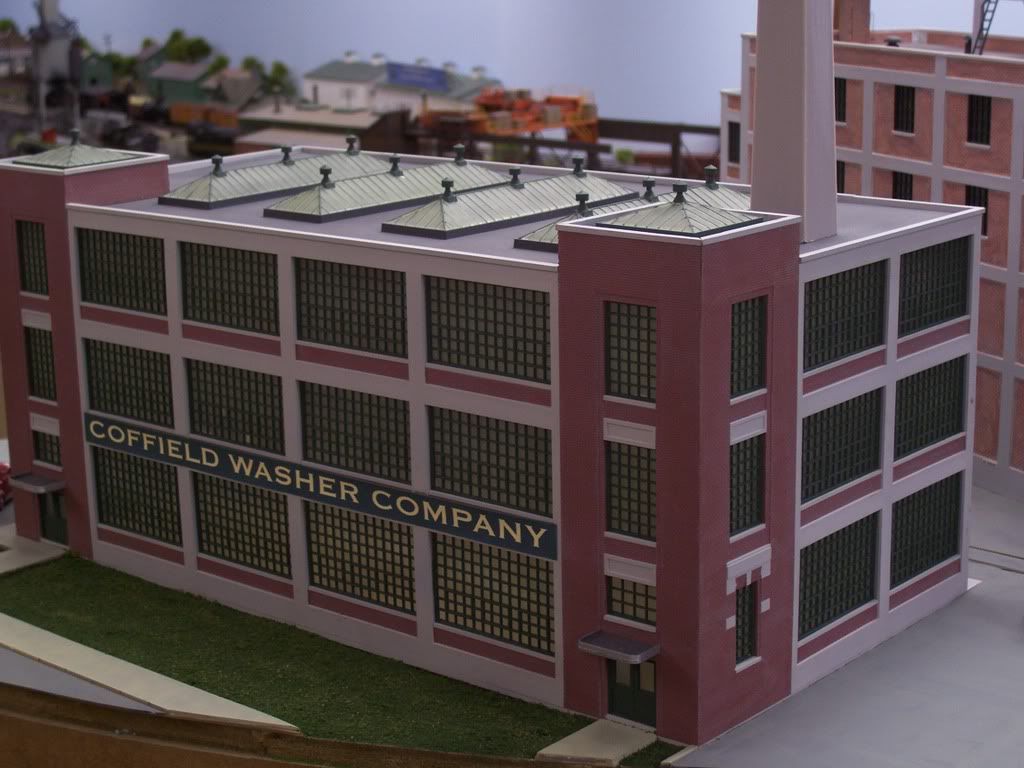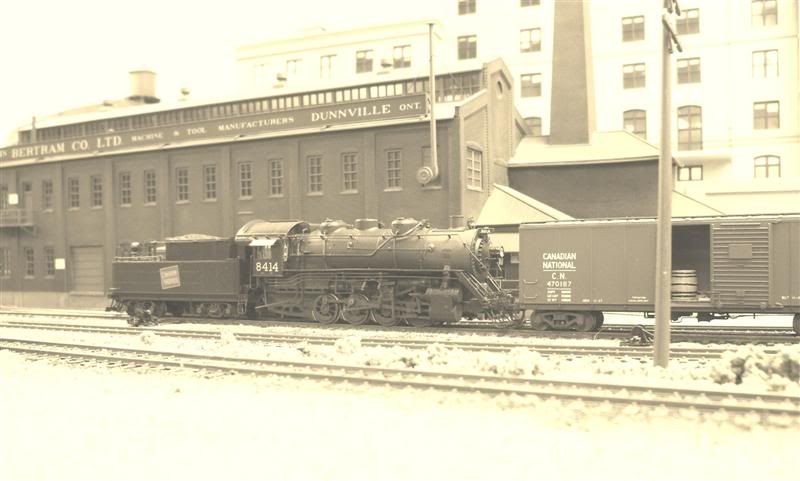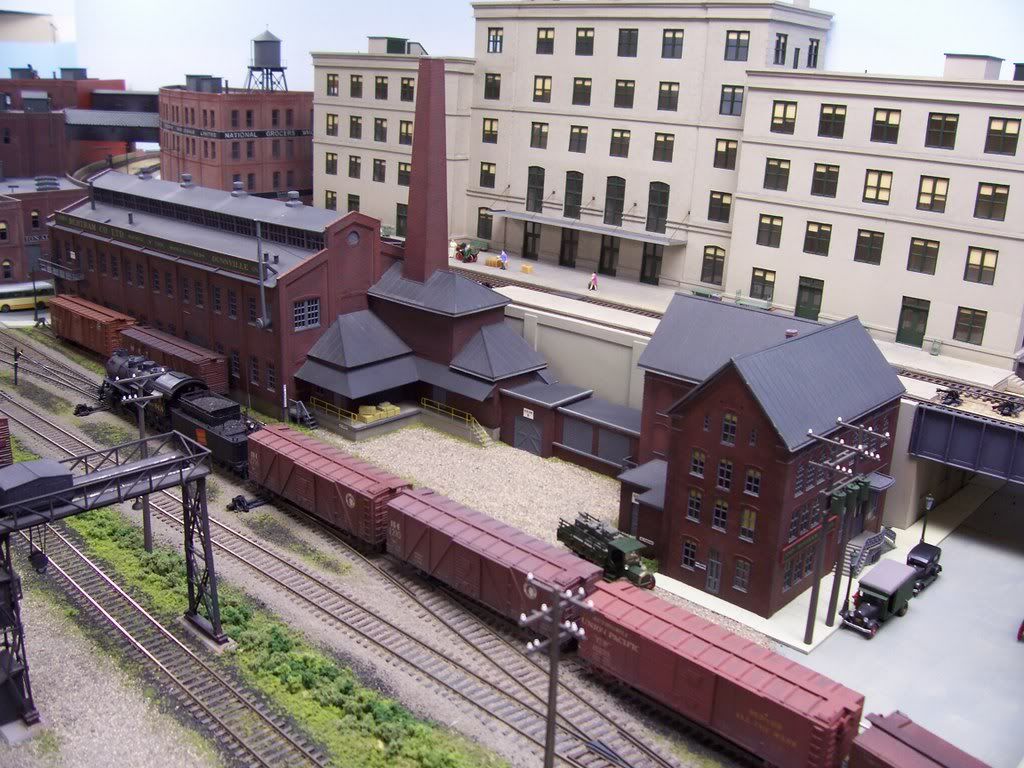Curious how you attach buildings to scenery. Do you mount on styrene or foam board then place? secure with plaster or sculpta-mold? glue directly down? wood blocks in the building?
Alan
Curious how you attach buildings to scenery. Do you mount on styrene or foam board then place? secure with plaster or sculpta-mold? glue directly down? wood blocks in the building?
Alan
most of the structures are removable but the larger ones are either on foam core board or gator board and one or two on plywood attached underneath to risers. SO if I ever do want to remove them I can cut the scenery away and unscrew the risers.
I place a “foundation” of balsa wood glued down and set the building over it. It stays put and is easily lifted off.
I glue mine down with caulk. I apply a little bit in the centre of each wall and set it in place. I glue them directly to the layout–foam, plaster, plywood, whatever’s in that location. I build up the scenery material–grass, gravel, weeds, etc.–to the building to hide any gap between the building and the ground. One way to find out if you’ve left any gaps under the building is to take a closeup photo of it. It will show up any gaps that your eye won’t spot.
This is one time where I use the thin planks of white styrofoam found with the packaging of electronics. They can be cut to size, glued to the bottoms of styrene or wooden models with latex caulk, and then either painted directly to look like a foundation, or thinly coated with plaster or caulk on the sides, smoothly, whereafter you score the coating with a sharp hobby blade to create expansion joints or brick/stone outlines.
-Crandell
It can also depend on how you’ve constructed your layout. Mine is patching plaster over window screen in most areas, but urban areas and larger structures sit atop plywood, cut either for individual buildings or for a group of buildings. The ones on plywood are usually secured by the addition of ground cover, held in place by a mixture of white glue and water. The buildings don’t move, but can be removed with a little effort (which messes-up the nearby scenery).



I also use sidewalks and roads to hold structures in place:


Stock pens are built-up as sub-assemblies, with the corner posts longer on their bottom ends than the intermediate posts. I then drill holes into the plaster at appropriate points, assembling the pens as the walls are installed. Once the cement has dried, the entire assembly can be removed as a unit for any required detailing work.

Smaller structures, like this shed, are set into a suitable excavation in the hardened plaster, then the ground cover added, holding it in place;

The Atlas water tower in
Wayne
Those building look great. You should be proud of the way they came out. I especially like the one in the third picture with the loading dock with the yellow guard rails. How did you go about constructing the brick buildings? They don’t resemble any kits that I’ve seen before.
Pat
To answer the OP’s question, I will either;
Put a 3mm styrene ‘riser’ under the structure, then CA it to the baseboard, before bringing the scenery up to the structure.
Drill a couple of 2mm holes in the 3mm styrene riser, with corresponding holes in the baseboard. I will then glue 2mm styrene dowel through the baseboard holes and trim it to be level with the top of the riser when in position. Once this is done, I will use CA and strip styrene to form an outline of the riser - this is the ‘socket’ that the structure plugs into. Once this is all in place, I will then glue the structure to the riser and ‘plug it in’.
Which approach is used will depend on the structure. A cheap plastic kit background building - or any other structure that can be replaced - will get superglued down. A delicate/rare structure (e.g. a stockyard you spent three months scratchbuilding) will be made removable.
Hope this helps,
tbdanny
Thank you for the kind words, Pat.
The John Bertram Machine Tool Works was originally Walthers Vulcan Foundry. I built it with both long walls visible, as my layout is an around-the-room type. The back is mostly plain .060" sheet styrene. Here’s a photo from the early '30s:

And an over-all view:

The boiler house and truck shipping and receiving are mostly MDC wall sections from their old 3-in-1 structure kits, with roofing from chopped-up sections from a Vollmer roundhouse. The loading docks and building foundations are more .060" sheet styrene, as are the roofs over the docks. The railings are brass wire, soldered together:


The office is a LifeLike Bottling Plant, its walls and roofs re-arranged to suit the available real estate:

Wayne
Wayne if you ever get board and find yourself looking for something to do and want to visit New Jersey (God I don’t know why anyone would if they didn’t have to) let me know I could really use your talents.
Thanks for the invite. [;)] I was actually in New Jersey with a friend this past summer, visiting a fellow model railroader in Boonton. I’ll have to see if we ever get invited back there again. [(-D]
Wayne
Sorry; don’t mean to hi-jack this thread!
If his name is Gary tell him “hello” from me. I used to converse with an exceptionally talented model railroader from Boonton on another forum but I seem to have lost “track” (no pun intended) of him.
Matt
That’s OK Matt, I think many of us can use the help from time to time. Really great strucutures you have there Wayne (nice layout as well).
Back to the OP, do a lot of you build on sub-bases then move to layout, or just put a structure in place then landscape and detail around it? My personal view is build and detail small vignettes on foam board or thin ply (maybe sheet styrene) then place on layout.
Alan
Matt, I sent you a PM regarding this.
Alan, thank you for the kind words.
Wayne
I tried mounting my buildings to foam board and even beveled the edges but I still didn’t like it. Now if you were going to do a whole scene like a lumber yard or power plant then yeah, you might want to mount that to something that is removable from the layout. But if it’s just individual buildings I wouldn’t bother and just glue them down with some Elmer’s and use your scenery skills to blend it in. Good luck.
My scenery “skills” have yet to be tested.[;)]
Doc.
How did you do the hedge along the sidewalks in this photo. Like everything else you do they’re awesome.[bow] Thanks.
Brent
Thanks for the kind words, Brent. [:)]
The hedges are suitably-sized strips cut from the packing foam for a Spectrum steam loco. It’s been a while since I made them, but if I recall correctly, I used a 1/2" brush to paint full-strength white glue onto the foam, then sprinkled it with Woodland Scenics fine ground foam, This was then given a light misting with some “wet” water (water to which a few drops of liquid dish detergent has been added) in order to draw some of the glue up and into the ground foam.
Wayne
I’m impressed. When I first saw them I assumed they were the premade hedges from Faller. Your way is much better.
Thanks, You could probably use any type of foam, but the stuff from Bachmann has a very tight cell structure, so it doesn’t absorb the glue too quickly or too deeply.
Wayne